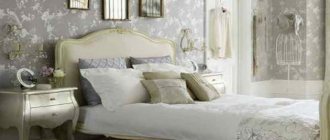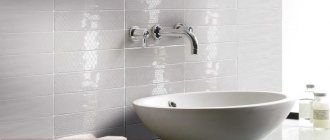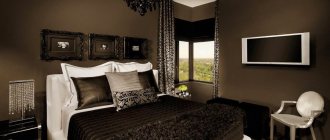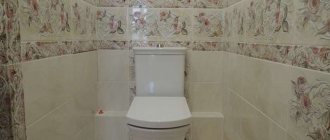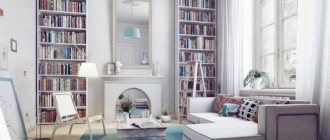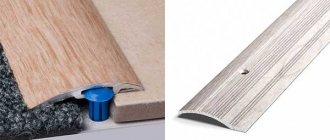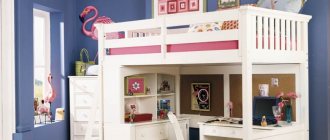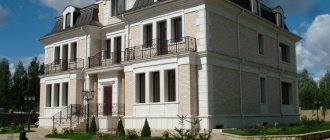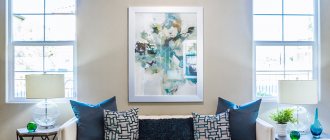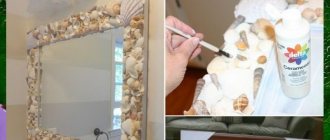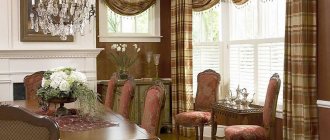What is a panel?
A panel is a kind of painting with a concrete or abstract plot. Usually it consists of several tiles assembled into a single composition. It can be from 2 to 9 tiles or much more, or maybe one large slab. The imagination of manufacturers here is varied.
It is clear that one would like to bring such beauty to the most prominent place. Choose: behind the sink, behind the stove, or in any space free from kitchen appliances and utensils. In any case, you need to know in advance what and where will be located within your kitchen space. Do you already know this?
Choosing a panel plot for the kitchen
The tile panel should be in harmony with the surrounding interior as a whole and, in particular, be combined with the base tiles around it. If you choose a specific interior style, for example, Provence or country, then the panel must fit into your style.
Do you already have ideas? If not, you can always find them. For example, go shopping, look through catalogs of ceramic tile sellers in the same stores or on websites, look through magazines on interiors, talk with consultants in the store. And it should be noted that a good consultant can always lead you in the right direction.
Choose what is closer to you - wine theme or coffee and tea theme? Or maybe one of these options: desserts, honey and honeycombs, nuts, flowers, countries/travels, natural landscapes, marine themes (although it’s closer to the bathroom, but why not), megacities theme, fish or fruit vegetable? Or maybe you are a lover of Russian classics and the theme of “Khokhloma” or “Gzhel” is close to you? Or do you want to have a copy of a painting by a famous artist or a photograph in your kitchen, including one taken from your personal archive? Modern technologies provide almost unlimited possibilities.
Beautiful examples in the interior
You can add originality to your design using decorative tile panels. This design looks beautiful in any room. A hallway panel is considered an excellent choice; it will help enliven the interior of the room, making it cozy and interesting. In the hallway you need to place horizontal paintings and decorate the upper part of the wall with them. The size of the image should correspond to the proportions of the room.
We suggest you familiarize yourself with how to cover tiles in the bathroom
You can choose natural motifs as a theme for the bedroom. To make the atmosphere in the room romantic and conducive to relaxation, you can place a panorama of nature, the seashore, trees, flowers and birds on the walls. An unusual choice would be a mirror panel.
The kitchen is a special room in the home; when decorating it, people try not to choose bright decor. In this case, the panel will help highlight the kitchen apron area. The compositions look beautiful on the wall near the dining table. You can use bouquets of flowers, fruits, vegetables, coffee grains as images.
In a children's room, with the help of panels, you can create original zoning, dividing the space into a play corner and a resting place. The drawings will look interesting on the walls and ceiling, turning the room into a race track or a fairy-tale castle. The design style in the nursery should be chosen taking into account the child’s preferences. Some kids love cartoon characters and funny animals, others may like a world map and bright comics. For large rooms you need to select bright compositions.
For the living room, you can choose compositions with lotuses, Japanese hieroglyphs, fish, images of the streets of European cities. Various abstractions with geometric shapes in a modern style will look great. If the living room has an area for a workplace, you can install tiles with the image of a geographical map.
For a bathroom, a panel with a marine theme would be a harmonious choice. It is recommended to place an image with palm trees and the sea on the wall; the flooring should be decorated with small mosaics. In the bathroom, the panel can be installed anywhere. It can be the main decor or a separate fragment of the frame.
If the room is decorated in eco-style, images with imitation of natural materials (wood, grass and cork) would be appropriate here. The combination of tiles and metal looks original; you can use it to create a graffiti design.
How to lay tiles if a panel is planned in the center, see the video below.
A staircase with tiles becomes a bright interior accent.
Ceramic tiles go well with natural wood and harmonize with forged elements. A staircase whose risers are decorated with tiles not only looks unforgettable, but also becomes more functional. Its service life increases because ceramics are less susceptible to negative external factors than wood. Such a combined staircase in the interior looks much more attractive than a completely tiled one.
Types of tile panels for the kitchen
Conventionally, panels can be divided into two categories:
- mass production;
- individual order.
The number of factories engaged in mass production, both Russian and imported, is greater than ever. As they say, “choose - I don’t want.” But you want it, so feel free to go to stores specialized in this area and choose from all the splendor of products.
It also happens - you have an idea, but you haven’t found a tile panel to go with it. In this case, there are several custom-made options:
- hand-painted ceramic tiles;
- ceramic photo tiles;
- glass cloth with photo printing (thrown off);
- stained glass panel;
- mosaic panel.
Custom-made tile panels are relevant, including for cafes, restaurants and culinary studios with a kitchen space open to visitors. In this case, it is possible to apply corporate colors, logos and other images approved by the brand book.
It is clear that everything created according to your individual order is usually priced higher than any mass production. Keep this in mind when calculating your renovation budget.
Let's talk about the types of panels based on materials and tile formats.
Mosaic panel
Mosaic is a scattering of small ceramic or glass tiles, ranging in size from 1 to 5 cm, which can become a single canvas only through enormous patience, labor and skill. There is a mosaic already assembled in separate parts of the plot on flexible bases, and this makes the work much easier and allows you to lay out large areas at once.
More often, mosaic is used for bathrooms, but if mosaic warms your soul, no one bothers you to show imagination, a non-standard approach and come up with something special. The idea of making a panel from fragments of ordinary ceramic tiles will also help with this. This is a labor-intensive process, but it pays off with the opportunity to create something completely unique.
Ceramic tile panel
In this case, the size of the tiles is already much larger. The most common: 10*10, 20*20, 20*30, 30*30, 30*40, 25*45cm. Please note that the surface of ceramic tiles can be glossy or matte. What is closer to your interior or taste is up to you.
As we have already said, ceramic tiles are available in mass and individual production. The first one can be bought immediately or, if the seller is not in stock, ordered from the catalog and wait until it is delivered from the manufacturer. By the way, very often the panel is part of a ready-made collection, which includes base tiles, inserts, and borders. You can immediately buy the collection and be sure that your “apron” or wall will look absolutely harmonious.
If you need something individual, then order hand-painted or photo tiles. The production of photo tiles takes from 3 to 14 days. Approximately the same time frame is required for hand-painted tiles, although in the latter case it all depends on the complexity of the image. Originality often takes more time than standard things.
What is good about photo tiles? Absolutely any image that exists in digital form can be applied to it. Want your family photo? Please! Do you want a painting by a famous artist or a photo of a city landscape? No problem.
The most common methods for producing photo tiles are the decal method and the sublimation method. Let's talk about the first method. The image you choose is printed on a digital printer using special inks, applied to the tile, and then fired at a temperature of 800-900 degrees. Such tiles are not afraid of any influences - neither mechanical, nor chemical, nor temperature. And in general, it will serve you for 50 years, according to the manufacturers.
Phototiles made using the sublimation method have two advantages and one significant disadvantage. Sublimation means brighter and more saturated colors and a more affordable price. The downside is only a 2-year warranty on image preservation with proper care.
A panel of hand-painted tiles is durable, like any mass-produced tile, since the design is also fixed by firing at high temperatures. It’s up to you and the painting artist to decide what the drawing will be like.
Glass panel with photo printing (skinned)
Skinali are large sheets of glass with an image applied to them from the inside or outside using digital printing. The image, as in the case of photo tiles, can be applied to absolutely any image, as long as it is in digital form.
The most common location for such a panel is the kitchen “apron,” since glass is probably the most convenient material in terms of maintenance. To make the skinali, especially strong glass with a thickness of at least 5 mm is used. For greater confidence, you can use tempered glass, its strength is 5 times higher, but the cost will also jump very noticeably.
Skinali are very easy to install; the glass is attached to the wall using various fastening systems (hooks, frames, etc.). Professionals never use glue when installing glass, as it spoils the image.
Stained glass panels
Such panels are made according to your individual order using the fusing method. Stained glass is an image made from multi-colored pieces of glass and fired at very high temperatures. It is very beautiful and very expensive. Not the most common type of panel for kitchen walls; more often, such glass is used to decorate inserts in interior doors and kitchen facades.
Mirror panels
A panel of mirror tiles in the kitchen is also not common. It consists of tiles of different geometric shapes, made of mirror cloth. Such a panel expands the visual space and adds light to the room. The big disadvantage of a mirror panel is that it requires constant maintenance, since any, even very small, drop is visible on it. But, if you are ready that such beauty requires your sacrifices for regular washing, then decisively use this design move in your kitchen. Or place a mirrored panel in the dining area where there is less splashing.
Why is it worth decorating your walls with ceramic panels?
Ceramic tiles are a universal, practical building material. Modern technologies make it possible to create full-fledged paintings and photographs of any size by combining individual fragments. This design technique complements and diversifies the interior and makes it easier to maintain the walls. This is a reliable and durable way to protect walls from external influences and does not require careful maintenance or regular renovations.
Mosaic made from broken tiles is a democratic replacement for ordinary mosaic.
We invite you to familiarize yourself with Cold water standards per person per month
From multi-colored fragments of ceramic tiles you can create a colorful panel. The complexity of the drawing depends solely on your level of creativity! Even a child can draw a simple motif on the wall, which is then tiled. These can be schematic images of flowers, animals, ornaments.
An easy to implement idea - an abstract panel of multi-colored stripes and geometric shapes. As a mosaic, use not only the remains of tiles, but also broken dishes and large beads. To develop a complex panel, we recommend inviting friends with artistic taste. This is necessary to create a color scheme that will add dimension to the image.
If you draw up a diagram yourself, remember: the more shades used, the more impressive the panel. The tile can be painted: the surface is cleaned of the glossy layer using an abrasive, for example, sandpaper, and then covered with paint for ceramics or glass. Don't forget about a layer of protective varnish.
A clock with a tiled mosaic is a simple but functional decor.
In order to make an original clock for the kitchen with your own hands, you will need a whole ceramic tile with a beautiful pattern and a ready-made clock mechanism. You can get it from an old watch or buy it in a store that specializes in selling handmade goods. You need to make a hole in the central part of the tile using a drill.
A tile pattern would be especially appropriate in the kitchen.
Plain ceramic tiles become a non-standard basis for drawing, replacing paper or canvas. If you are confident in your own artistic skills, create on one or several tiles glued to a common base, using paints for glass or ceramics. Complete the finished composition with a frame suitable in style and size.
For the base, it is better to choose a light, plain tile.
Features of installing tile panels in the kitchen
If it is ceramic tiles or mosaics, then use regular tile adhesive, which sales consultants at a hardware store can easily tell you about. Or you can easily choose it yourself, especially since tile manufacturers usually give their recommendations on auxiliary materials for installation.
When installing, take into account such spatial solutions as the need to visually extend the space of the “apron” or, conversely, expand it. This, of course, needs to be taken care of in advance, even at the stage of selecting the panel. And, if necessary, it is better to buy panels made of rectangular tiles. When positioned vertically, they will increase the height of the “apron”; when positioned horizontally, they will stretch it in width.
Also think about the possibility of using friezes and borders in the design of panels. They will create a frame around the panel, giving it an even greater resemblance to a painting. The border also helps to harmonize the panels and the base tiles in color or texture.
Grout for seams. You will need it if you did the styling with seams in mind. Tile panels can be laid without seams if the edges of the tiles have very precise dimensions and absolutely right angles, which is rare. Most often, tiles are laid with seams; they allow you to level out any dimensional inaccuracies. In order not to spoil the single composition with seams, they are made as thin as possible, within 1 mm. You can use transparent grout, you can match it to the main color of the panel, or vice versa, make it in contrast with the main colors.
Decor
In modern design, ceramic tile panels play a huge role; they allow you to create unique masterpieces and fill the room with notes of sophistication. To further highlight the compositions against the general background of the interior and decorate them in an original way, designers recommend using additional decorative elements.
The image of the panel can be completed by:
- border with patterns;
- ornament with a mirror surface;
- pieces of broken tiles with imitation porcelain stoneware or marble.
There are several ways to create wall decor using panels.
Single insert
It is the simplest and most affordable type of finishing. In this case, the image is formed from one, two or four tiles on which the print is applied. The main task of such a composition is considered to be to revive the monotony of the wall surface. For example, such a panel in the form of a kitchen apron looks beautiful; it harmoniously fills the space behind the sink and stove.
We invite you to familiarize yourself with DIY electric heated floor Step-by-step instructions Video
Installation of photo panels
Such a pictorial element usually occupies a large surface area and can be placed on a wall, floor, or ceiling. In this case, the product can be prefabricated, mosaic and solid. For example, images of flowers (for example, irises, tulips) or a waterfall are suitable for the living room interior.
A photo depicting England or lilacs will look original on the bedroom wall. The choice of composition depends on the style of the room and personal preferences.
Many designers use frieze panels in the interior. It has no size restrictions and can be installed anywhere (in the center of the wall, in the corner). Moreover, often the composition is not a separate element, but acts as an addition to the decoration. For example, an arch separated by such a panel looks unusual, a monochromatic abstraction that emphasizes the beauty of the paintings. Frisize can often be seen in Provence style rooms.
Such a panel acts as a continuation of the overall composition and repeats the images of the entire picture. The surface of borders can be embossed and smooth; they themselves can be wide, narrow, in one or several colors. Borders are ideal for walls decorated with bamboo.
A popular option are horizontal stripes with a pink base, the top of which is dark and the bottom is light. As for the floor finishing, compositions that imitate porcelain stoneware or marble are chosen. The floor panel goes well with cash coverings.
Flowers in a pot decorated with tiles look even more beautiful.
Even rough flower beds, old pots and buckets are transformed after decorating with the remains of ceramic tiles. A tiled garden path will become the highlight of your garden plot. But in this case, we recommend using floor tiles with a matte surface. Otherwise, the path will be too slippery, especially in wet weather.
The basis for garden decoration can be made from cement mortar.
Caring for kitchen tile panels
Well, your dream of a beautiful kitchen has come true. All that remains is to save it. Let's talk about care, simple but necessary. The panel requires cleanliness, be it in the kitchen or anywhere else. Any detergent will do, with a few exceptions. If you have a panel made of glass or photo tiles using the sublimation method, then abrasives are excluded.
There are two more tips for glass panels. Do not heat them more than 80 degrees and do not shock them by sudden temperature changes, otherwise the glass will crack.
Make your choice, invent, create and enjoy your kitchen.
